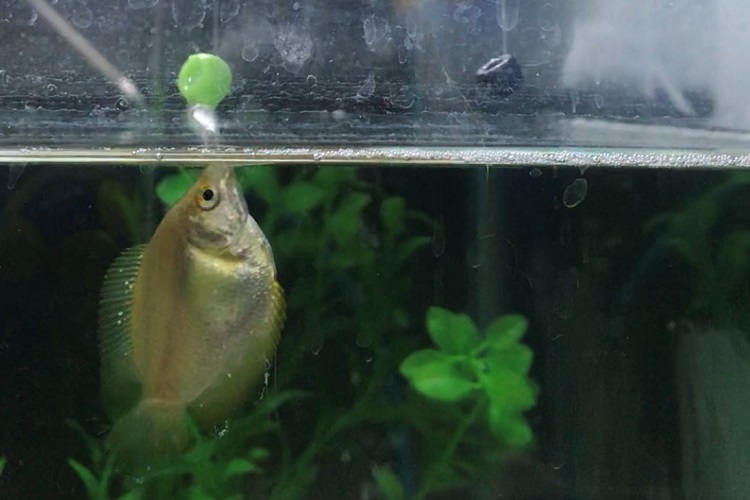Shooting fish

Shooting prey is a more common hunting technique in fish than previously thought, new research led by the University of St Andrews has found.
The dwarf gourami, a popular ornamental fish, can spit water or ‘shoot’ to hunt for insects above the water surface, according to the research, published in Experimental Biology.
Previously it was thought that only the archerfish was capable of shooting prey to feed. Ballistic predation is a rare foraging adaptation: in fish, most attention has focused on this single genus, the archerfish, which was already known to manipulate water to shoot down prey above the water surface.
However, several gourami species also exhibit apparently similar ‘shooting’ behaviour, spitting water up to 5cm above the surface.
In a series of experiments, the research team explored the shooting behaviour and aspects of its significance as a foraging ability in the dwarf gourami (Trichogaster lalius) – a common ornamental species kept in home aquaria around the world as a pet.
Dr Nick Jones, of the School of Biology at the University of St Andrews, said: “Together the results provide evidence that gourami shooting has a foraging function analogous to that of archerfish.
“Gourami shooting may serve as an example of convergent evolution and provide opportunities for comparative studies into the, yet unexplored, ecology and evolution of shooting in fish species.”
The team investigated sex differences in shooting abilities as gourami shooting was thought to have possibly been related to the sex-specific bubble nest manufacture – where males mix air and water at the surface to form bubbles to build a floating bubble nest where the fertilised eggs are placed to float above the water until they hatch.
However, both sexes were found to be equally able to shoot and learn to shoot a novel target suggesting that shooting is not linked to bubble blowing.
In a second experiment, the team presented untrained gouramis with opportunities to shoot at live prey and found they successfully shot down both fruit flies and crickets.
The researchers also explored the effect of target height on shooting performance to establish potential constraints of shooting as a foraging ability.
The gourami’s effective range is short, with success dropping at heights of 4cm, so this foraging behaviour would be most effective in places with thick overhanging vegetation close to the water’s surface.
Video of a dwarf gourami shooting a target.
The paper 'Short-range hunters: exploring the function and constraints of water shooting in dwarf gouramis’ is published in Experimental Biology and is available online.
Please ensure that the paper’s DOI (doi.org/10.1242/jeb.243477) is included in all online stories and social media posts and that Experimental Biology is credited as the source.
Issued by the University of St Andrews Communications Office.